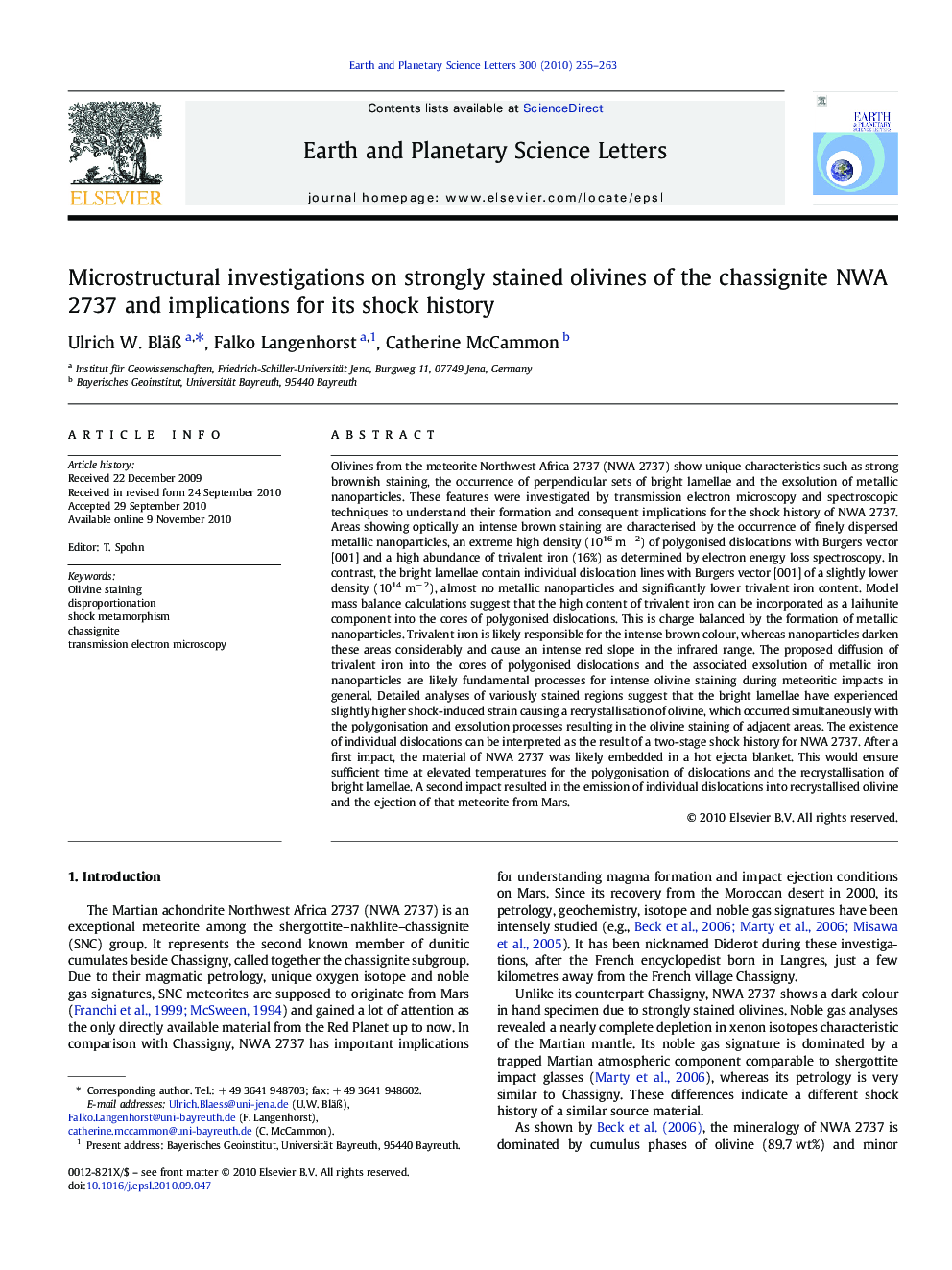| Article ID | Journal | Published Year | Pages | File Type |
|---|---|---|---|---|
| 4678155 | Earth and Planetary Science Letters | 2010 | 9 Pages |
Olivines from the meteorite Northwest Africa 2737 (NWA 2737) show unique characteristics such as strong brownish staining, the occurrence of perpendicular sets of bright lamellae and the exsolution of metallic nanoparticles. These features were investigated by transmission electron microscopy and spectroscopic techniques to understand their formation and consequent implications for the shock history of NWA 2737. Areas showing optically an intense brown staining are characterised by the occurrence of finely dispersed metallic nanoparticles, an extreme high density (1016 m− 2) of polygonised dislocations with Burgers vector [001] and a high abundance of trivalent iron (16%) as determined by electron energy loss spectroscopy. In contrast, the bright lamellae contain individual dislocation lines with Burgers vector [001] of a slightly lower density (1014 m− 2), almost no metallic nanoparticles and significantly lower trivalent iron content. Model mass balance calculations suggest that the high content of trivalent iron can be incorporated as a laihunite component into the cores of polygonised dislocations. This is charge balanced by the formation of metallic nanoparticles. Trivalent iron is likely responsible for the intense brown colour, whereas nanoparticles darken these areas considerably and cause an intense red slope in the infrared range. The proposed diffusion of trivalent iron into the cores of polygonised dislocations and the associated exsolution of metallic iron nanoparticles are likely fundamental processes for intense olivine staining during meteoritic impacts in general. Detailed analyses of variously stained regions suggest that the bright lamellae have experienced slightly higher shock-induced strain causing a recrystallisation of olivine, which occurred simultaneously with the polygonisation and exsolution processes resulting in the olivine staining of adjacent areas. The existence of individual dislocations can be interpreted as the result of a two-stage shock history for NWA 2737. After a first impact, the material of NWA 2737 was likely embedded in a hot ejecta blanket. This would ensure sufficient time at elevated temperatures for the polygonisation of dislocations and the recrystallisation of bright lamellae. A second impact resulted in the emission of individual dislocations into recrystallised olivine and the ejection of that meteorite from Mars.
Research Highlights►The physical origin of strong olivine staining caused by shock is due to the disproportionation of Fe2+ of olivine into Fe3+ and metallic iron nanoparticles. ►Sufficient amount of trivalent iron can be incorporated as a laihunite component into the cores of polygonised c-dislocations of olivine. ►The dislocation defect-microstructure suggests a two-stage shock history for the chassignite NWA 2737.
